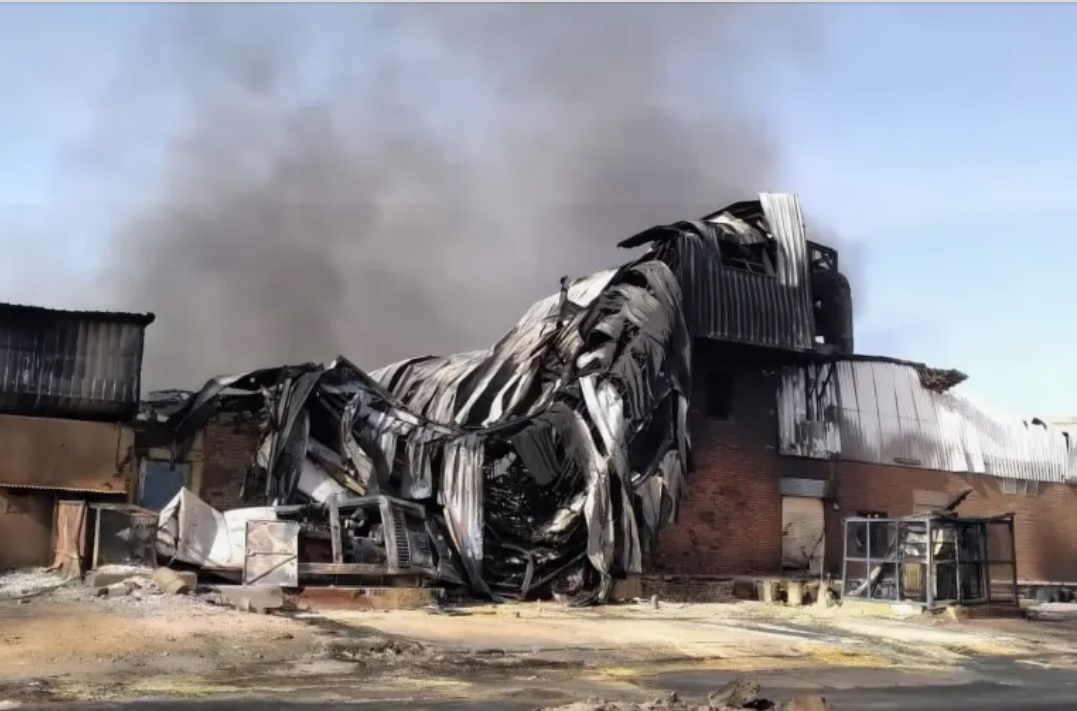
What Remains of Sudans Industry?
Youssef Hamad
In past decades, Sudanese people took pride in a reasonable level of local industry. Sudan has always possessed a broad industrial base, making it one of the largest African countries in terms of its manufacturing industries.
However, this pride has been fading over the years, until the complete destruction of the industrial structure occurred due to the war that erupted last April between army leaders and the Rapid Support Forces. This time, the capital, Khartoum, was the theater of conflict.
The war targeted not only homes, institutions, and numerous facilities but also industrial buildings in a tragically direct manner. It seems as if there was a deliberate targeting accompanied by numerous obstacles that plagued this sector.
Originally, the war started between the two parties with the motive to gain power. However, it quickly became comprehensive, extending into neighborhoods and outside military zones. It received generous support from elements of the Muslim Brotherhood seeking to obstruct the efforts of the December 2018 revolution and return to governing the country.
In the capital, Khartoum, the industrial infrastructure and factories witnessed burning, destruction, and looting, such as the industrial area in Bahri city. This area housed various transformational industries and was established in the 1960s.
The intense shelling from both warring sides was accompanied by a dense presence of thieves who looted everything, including machinery parts, raw material storages, and production facilities. Its not expected that these factories will return to their former state anytime soon.
Alongside the industrial area in Bahri, other industrial areas in the capital, which were able to reasonably meet the countrys needs for medicines, oils, soaps, foods, soft drinks, dairy products, paints, construction equipment, chemicals, agricultural equipment, clothing, and car maintenance before the war, are now completely destroyed.
In reality, the collapse of the industrial structure didnt start with the April war alone; it began decades ago under the Salvation regime (1989-2018). This was in favor of revitalizing the re-packaging and trade activity that relied on importing and exporting raw materials. This included agricultural and animal products, as well as the export of gold, petroleum, and minerals.
The Minister of Industry and Trade in the transitional government, Madani Abbas Madani, previously stated that the industrial contribution to Sudans economy is estimated to be less than 20%, and exports do not exceed 3% at best. This is due to the lack of infrastructure or support for local products. Transformative industries contributed around 7%.
Madani explained that factories were shut down for multiple reasons, including the absence of protection policies for national factories, leading to flooding the market with imported goods.
The transitional government, led by Abdalla Hamdok, initiated the implementation of industrial city projects based on the relative value of each region in Sudan, as well as the industrial survey project to assess the situation, available potentials, and hindered capacities.
In an effort to revive and protect the industry, Hamdoks government proposed the Industries Act, considering it the countrys first industrial law. However, all of these efforts were thwarted by the October 25th coup.
Under the policies of the Salvation regime, the industry faded even in regions and major cities. Only minor industries survived, which cannot be highlighted, facing challenges related to energy, industrial environment, taxes, regulations, and policy corruption.
Until the late 1980s, the state had a high percentage of industries. However, this percentage started shrinking in favor of urban aristocracy and emerging local capitalism. During that period, families like Al-Amin, Al-Nafeadi, and Al-Hilali gained prominence. Later, the commercial capitalism linked to the Muslim Brotherhood took over.
Currently, its impossible to account for the factories that have been completely demolished due to the targeting they faced. Ongoing confrontations between the two parties make it impossible to approach or capture images that reflect the extent of the damage theyve endured.
In this situation, it has become common to see Ethiopian and Egyptian products spreading noticeably in the markets of regions and distant villages, benefiting from the aftermath of the war in Khartoum and the decreasing local inventory of industrial consumer goods.
Since 2015, a preferential trade agreement was signed between Sudan and Ethiopia, eliminating barriers between the two countries and facilitating trade operations. Trade statistics from 2013 indicated that Sudans exports to Ethiopia reached 51.3 million, while imports from Ethiopia were valued at 29.9 million.
Before that, Sudanese investments in Ethiopia reached 2.4 billion. The Ethiopian Ministry of Industry stated that there were around 800 Sudanese companies operating in various trade fields in Ethiopia.
In December 2022, the Ethiopian Ministry of Foreign Affairs hinted at its intention to review the preferential trade agreement with Sudan due to changes in political and economic aspects since the agreement was signed. As of now, the political and economic emergency has become overwhelming beyond measure.

